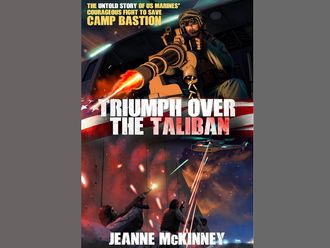The North Korean stand-off captured the attention of the global press for most of the week. Reports of miniaturisation of nukes by Pyongyang and the US being within reach of a strike, threatened to blow into all-out war. The crisis was further deepened with the US President, Donald Trump, warning of bringing “fire and fury” to the isolated nation.
The Washington Post warned against ‘rhetorical grenades’ but underlined the seriousness of Pyongyang’s nuclear programme. In its edit, the paper wrote, “Since nuclear bombs were dropped on Hiroshima and Nagasaki seven decades ago, they have not been used in combat. Still, the danger that they will be used again has never disappeared; the years since the end of World War II have been filled with false alarms and close calls, which could easily recur. The United States and Russia keep thousands of nuclear missiles on launch-ready alert, meaning they are ready to launch within minutes of a president giving the order. Adversaries know this. Mr. Trump’s threat of “fire and fury” may sound like hype to American ears, but the words could be heard quite differently by others, such as Mr. Kim, the belligerent leader of a nuclear North Korea. Mr. Trump’s language could easily be misunderstood — he didn’t say precisely what would lead to “fire and fury” except for North Korea’s “threats”— and the upshot could be miscalculation or, heaven forbid, the kind of accidental entry into conflict that has haunted the globe since the dawn of the atomic age.”
North Korea’s steadily advancing nuclear weapons and missile programs are serious; The Post further pointed out that intelligence officials believe the Pyongyang regime has successfully miniaturised a nuclear warhead to fit on a missile, the next step in a weapons system that could hit the United States. “Dealing with that will require patient pressure and skilled diplomacy, perhaps for years. Instead, Mr. Trump has strut into the arena with a jarring rhetorical grenade,” the paper warned
Cautioning that the North-east Asia can turn the region into a graveyard, Independent struck a terse note. “Terrifying, certainly, but it may be no bad thing that the world is starting to contemplate exactly what a confrontation between the United States and North Korea might look like. Whether via-long range missiles or the very short-range bombardment or invasion of South Korea; whether aimed at the US mainland or a military base such as Guam; whether nuclear or conventional, the consequences of such a war vary only in the speed at which they would lead to an apocalypse. Millions would die, more would be horribly injured and starve, the environmental damage would be vast and most likely irreparable, the world economy would be driven into depression, and, in fact, it would resolve precisely nothing, unless the view is taken that the only way to preserve stability in North-east Asia is to turn the region into a graveyard.”
LA Times called for prudence in its editorial, asking the Trump administration to take a more responsible position. “Indeed, the administration eventually may be willing to resume talks with North Korea without a commitment by Pyongyang in advance that it would be willing to dismantle its nuclear program. Secretary of State Rex Tillerson told reporters that the best signal that North Korea could give us that they’re prepared to talk would be to stop these missile launches. This combination of prudence and pressure is less emotionally satisfying than the simplicities and sabre-rattling of the first few months of the Trump administration. But it’s also more responsible and realistic,” the newspaper said.





_resources1_16a31069e4e_small.jpg)






